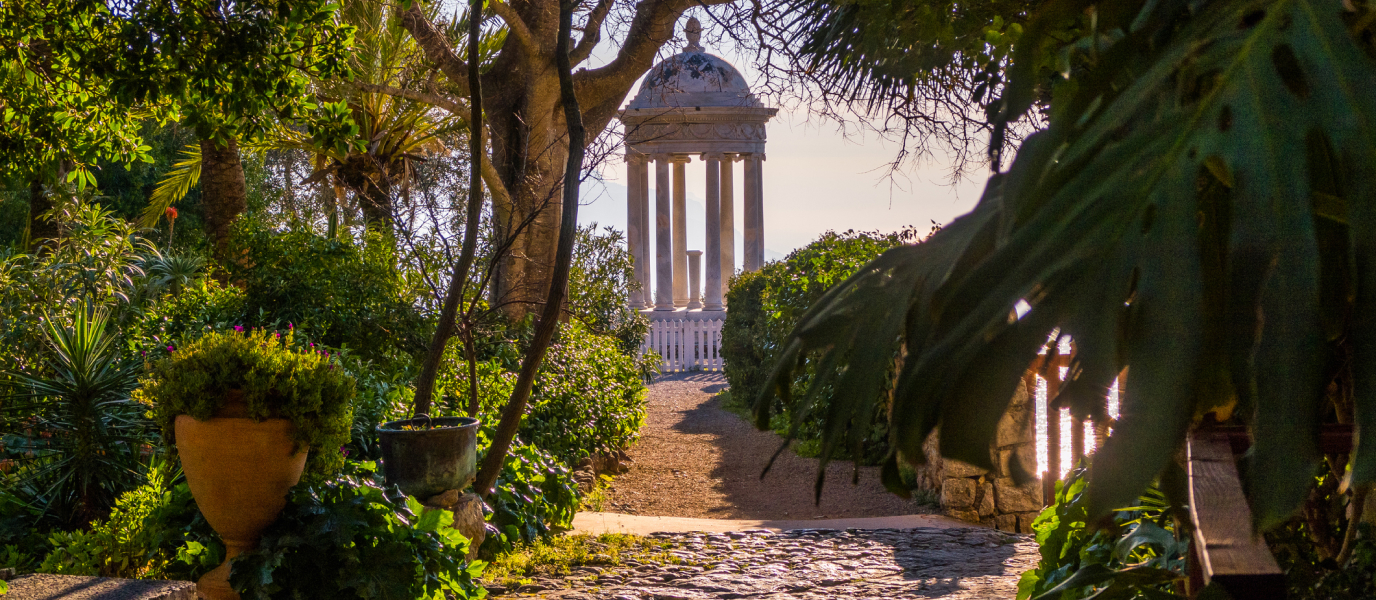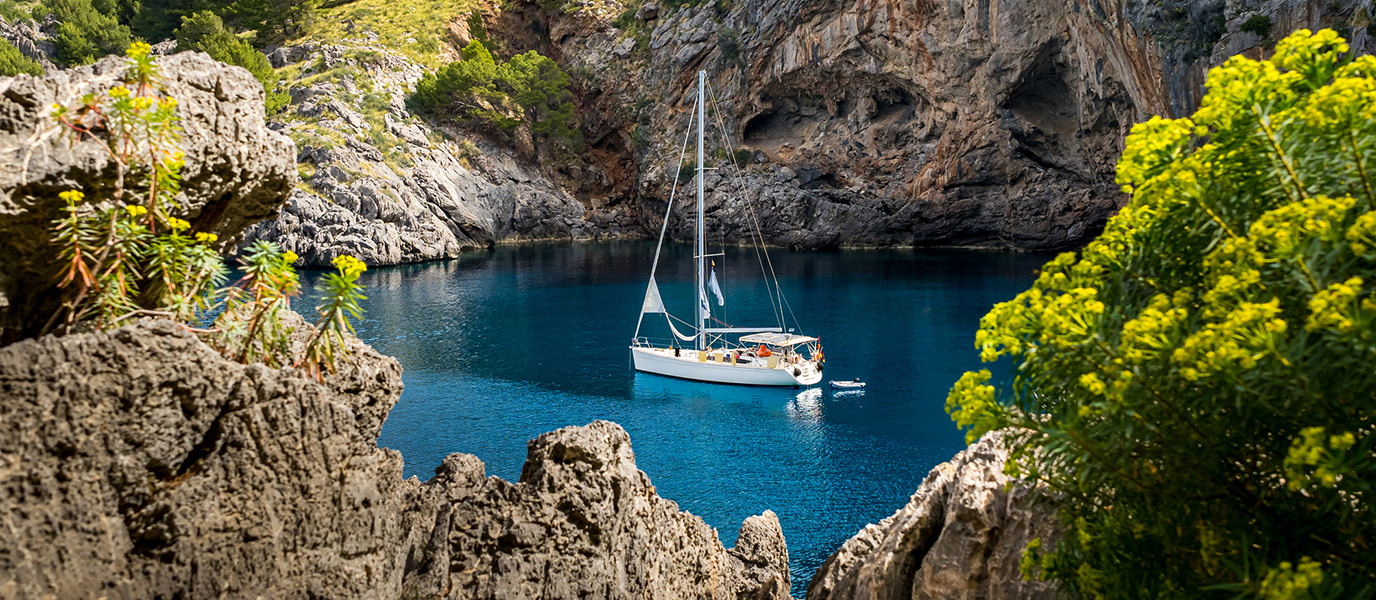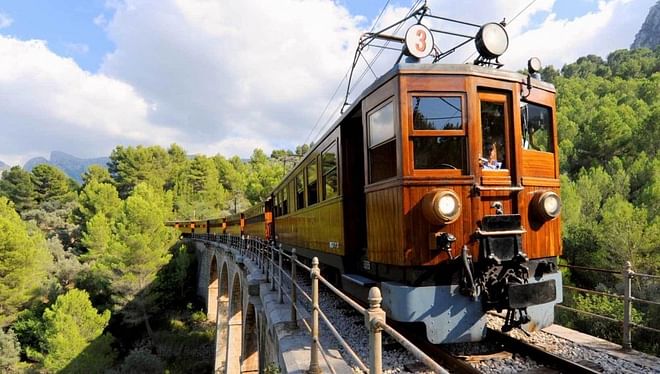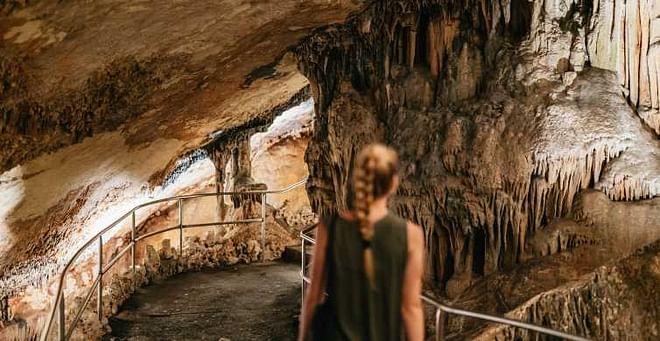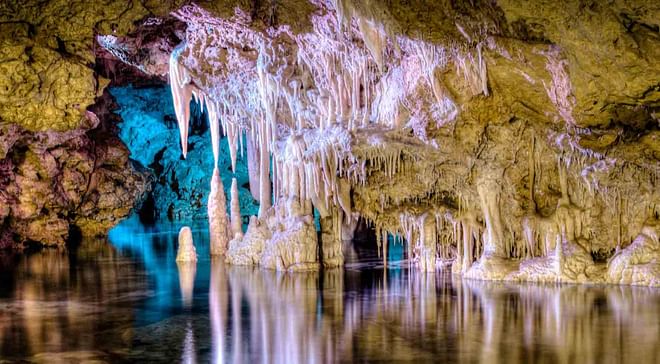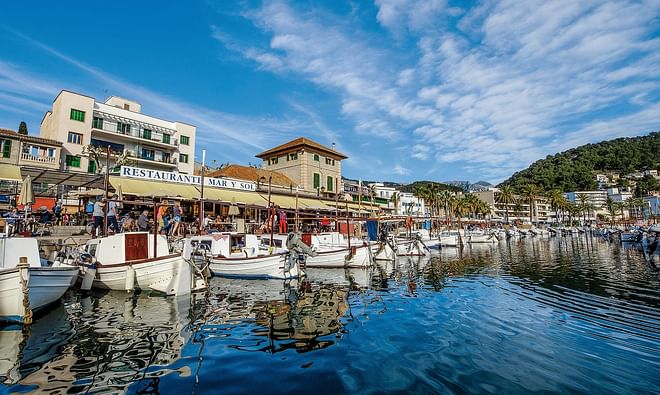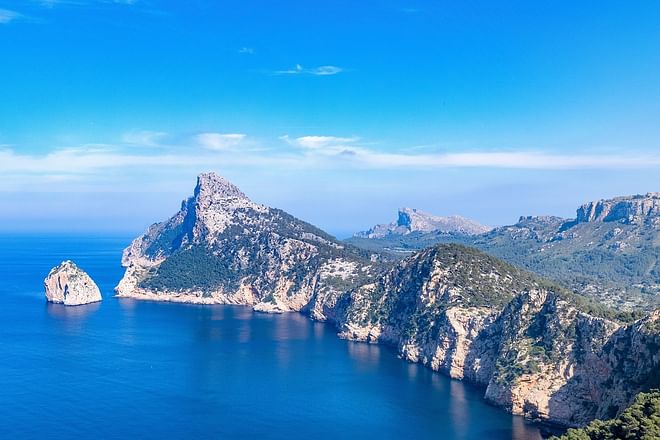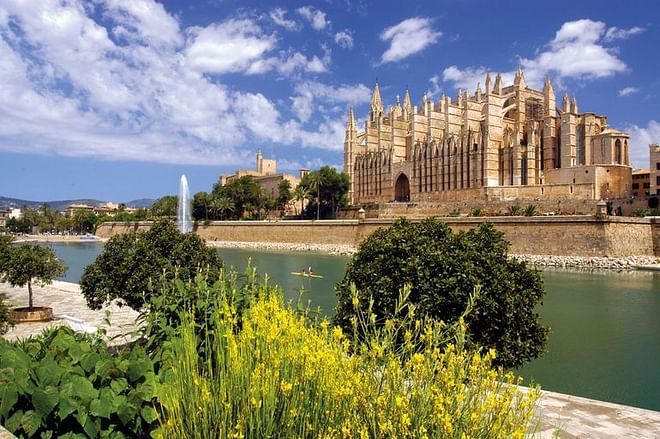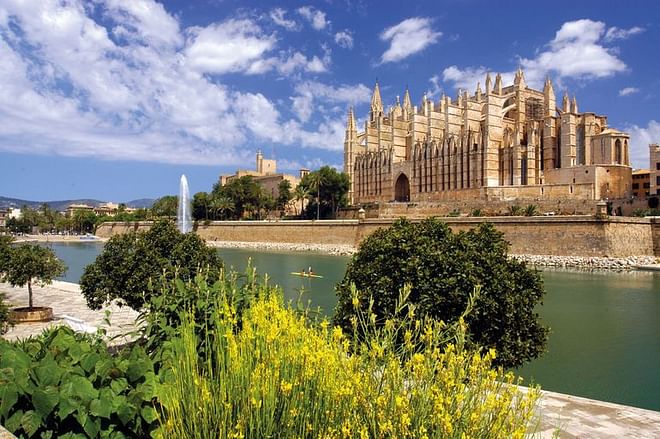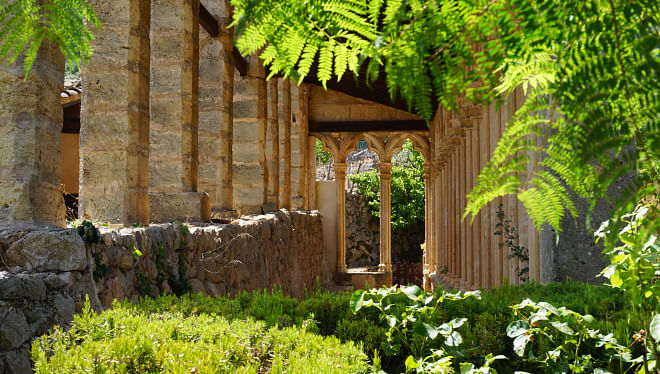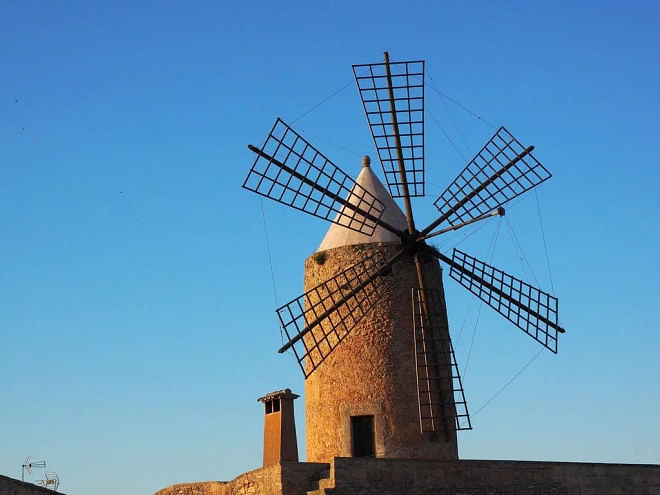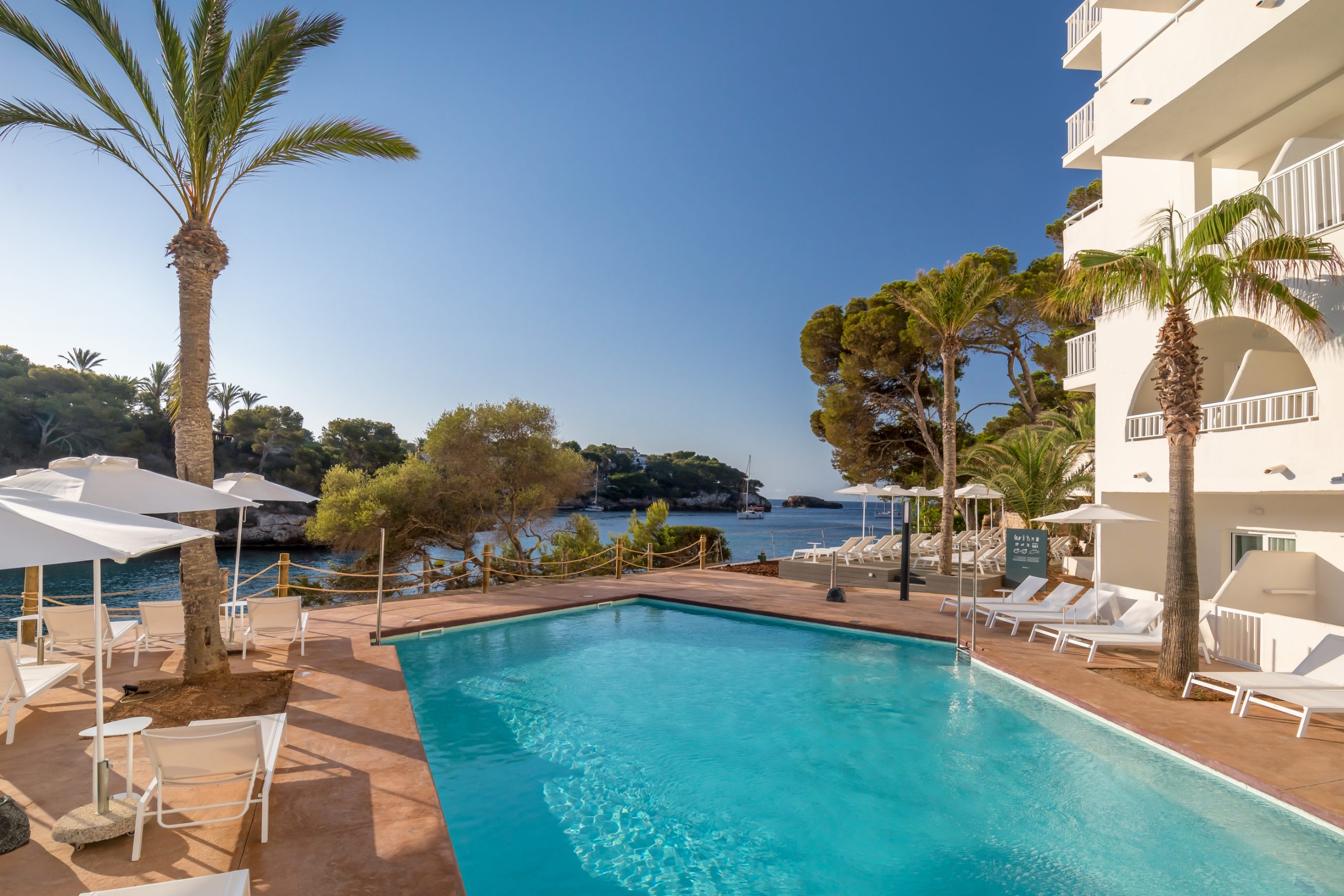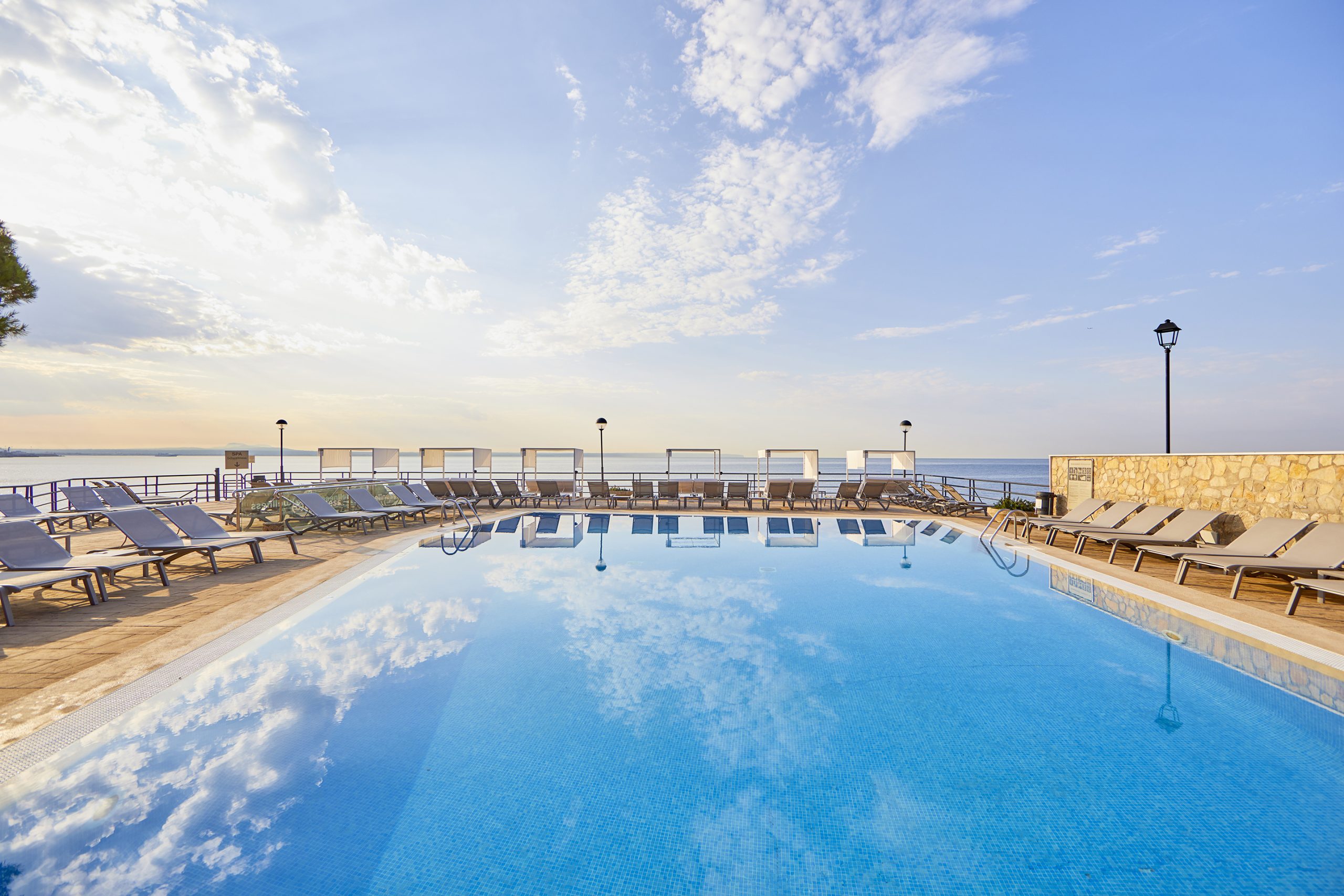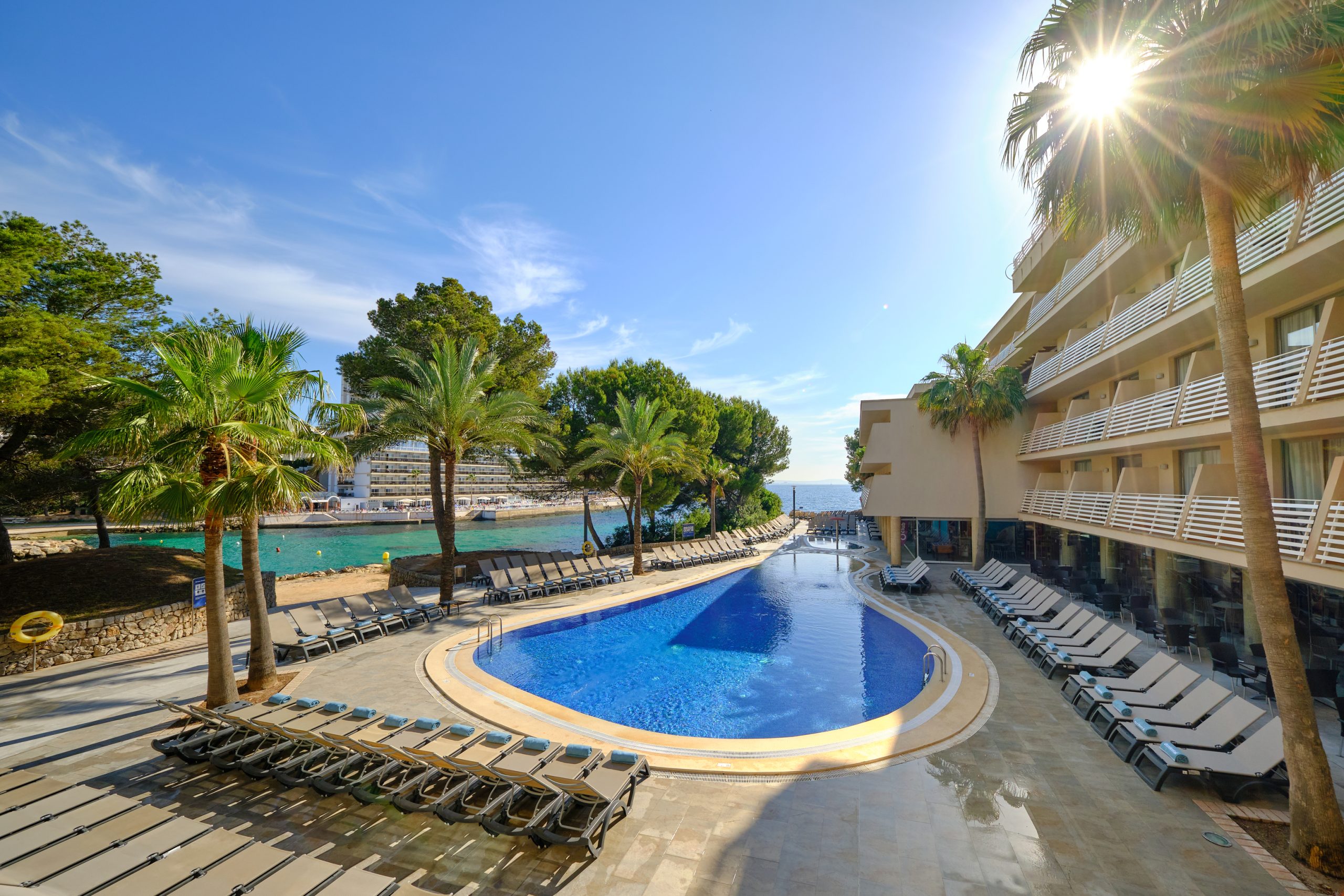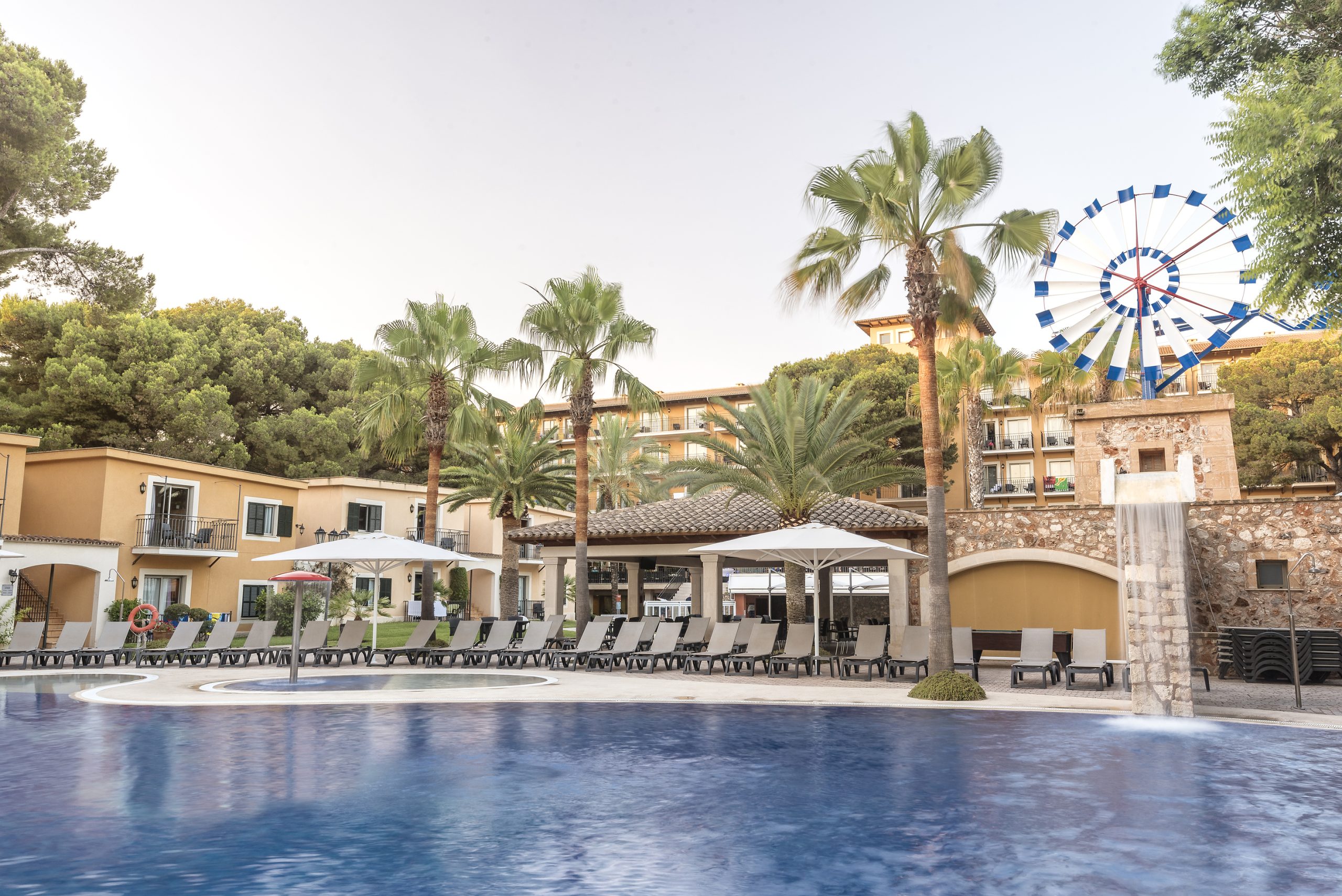La Lonja (la Llonja) probably goes unnoticed during a quick visit to Palma de Mallorca, especially because tourists are usually so impressed by the monuments in the surrounding area that they do not notice it. The cathedral (corresponding URL) and the Almudaina Royal Palace (corresponding URL) are the ones that shine in the area’s limelight.
However, La Lonja is clearly the best example of medieval civil architecture on the island. Built in the 15th century, it is also one of the most harmonic buildings and with the greatest influence in the history of architecture, especially because of its rich and original interior, a wide nave covered with high rib vaults.
For many centuries, it served the purpose for which it was built: a meeting point for merchants. Nevertheless, like so many other large historical buildings, La Lonja in Palma has served for many other diverse and surprising uses during its history.
La Lonja in Palma: where, when and why
Construction of La Lonja began in 1420 and ended in 1452. Therefore, this grand building is late Gothic because of the period and style.
The project was designed by Guillem Sagrera, a Majorcan sculptor and architect born in Felanitx. He was also responsible for the construction of major buildings in Majorca (such as the cathedral’s chapterhouse) and in other areas of the Kingdom of Aragon; for example, Perpignan cathedral, the restoration of Castel Nuovo in Naples and some parts of Girona cathedral. His influence can also be seen in many other buildings such as La Lonja de la Seda in Valencia (link to the corresponding URL).
Nevertheless, Sagrera stopped supervising the construction work in 1446 due to serious discrepancies with the developers, and the finishing touches to La Lonja in Palma were delayed until the end of the 15th century.
Like other civil buildings in the medieval period, La Lonja in Palma was built with the intention of making it the main meeting place for the merchants who frequented it and a trade exchange. That is why its strategic location makes sense: it is near the city’s port, which is where most of the merchandise that was sold inside would arrive. It is also very close to the cathedral and the Almudaina Royal Palace; in other words, near the headquarters of the civil and religious authorities.
Therefore, the construction of La Lonja, the headquarters for the Merchants’ Association (the guild body of Majorca’s merchants), meant that the third estate in the medieval period, i.e. the traders and merchants, established itself in this urban area.
Architecture of La Lonja in Palma
The exterior of La Lonja may not be especially eye-catching. In fact, it is a monolithic construction decorated with some significant details, especially the windows, doors and main façade, where the main portal is located. It is presided by a magnificent sculpture of the guardian angel holding the following inscription: ‘Defenedor de la Mercadería‘ (Defender of Merchandise).
The image has traditionally been attributed to Guillem Sagrera himself, just like the pointed arches of the windows and the other doors of the building, which enable Majorca’s intense sunlight to pass through to the interior. The arches are richly decorated with intricate stonework in the flamboyant Gothic style.
The corners of the façade are crowned by four main defensive turrets (although they never served that purpose). In between, there are battlements and smaller turrets. In the main corners of the building, there are three religious images carved in sandstone (the fourth one disappeared in the last century). Some of the roof drains have grotesque gargoyles, which are some of the most striking features of La Lonja.
Nevertheless, the real architectural gem of La Lonja is its interior. It is rectangular and divided into three naves. This is not a physical division but a visual division shaped by the pillars supporting the rib vaults. The pillars, without a base or capital, are the real architectural feat since they spiral upwards directly towards the vault ribs, resembling enormous stone palm trees.
Uses of La Lonja in Palma
La Lonja in Palma de Mallorca was initially used as the city’s main trade exchange and remained this way for hundreds of years, until successive economic crises due to the country’s misgovernment reduced the exchange of goods to a minimum.
Therefore, in the 17th century, La Lonja practically became a mere warehouse for goods and agricultural products. In subsequent centuries, the building had diverse uses such as a prison, hospital and gunpowder magazine.
During most of the 19th century, its interior was used to hold popular dances, especially at Carnival. It already began to be used as a cultural centre in that period. As such, it held diverse exhibitions related to the fine arts, which enabled it to become one of the main beacons of art in Palma de Mallorca.
This links it to the uses made of La Lonja since the end of the 20th century, which has been the temporary setting for the most diverse exhibitions. That is why the building opens only when there are temporary exhibitions and is closed to the general public for the rest of the year.





































































